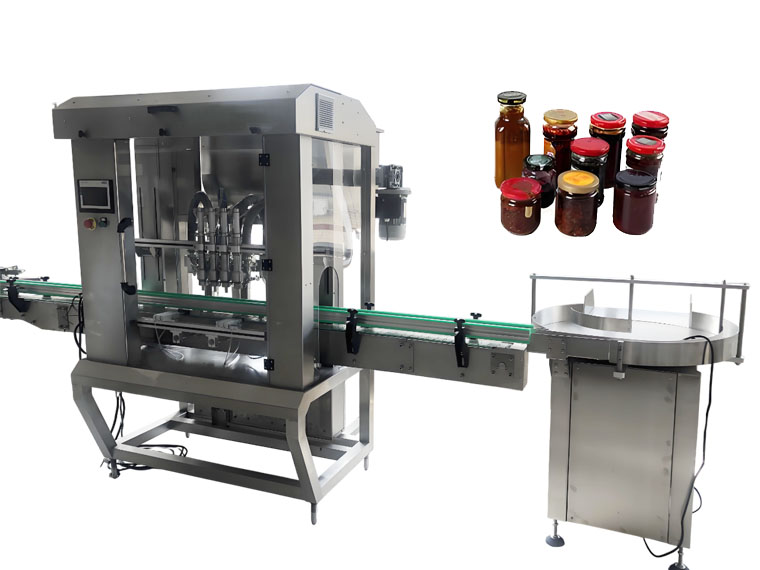Peanut butter filling machines are specially designed to package peanut butter efficiently, and with the growing consumer market for peanut butter, the importance of these machines in the peanut butter production line is becoming more and more prominent. Depending on the scale of production and the type of peanut butter being processed, the market offers a wide range of filling machines to meet different needs. The following is an introduction to common peanut butter filling machine types and their characteristics.
I. Types of Peanut Butter Filling Machine
Manual Peanut Butter Filling Machine
Manual peanut butter filling machine is an easy-to-operate device that mainly relies on manual operation. Users need to manually pour the peanut butter into the machine and complete the filling process by manually applying pressure.
Applicable Scenarios: best suited for small-scale production or home use.
Advantages:
Low cost, easy to purchase.
Simple to operate, easy to maintain and service.
Disadvantages:
Manual operation leads to low efficiency.
Limited filling capacity, unable to meet the needs of mass production.
Semi-Automatic Peanut Butter Filling Machine
Semi-automatic peanut butter filling machine falls between manual and fully automatic solutions and is usually equipped with a filling head and control panel. The user simply places the container under the filling head and initiates the filling process with the push of a button.

Scenario: best suited for small to medium sized businesses.
Advantages:
Faster and more efficient than manual machines, boosting productivity.
Suitable for small business budgets and sizes.
Disadvantages:
Still requires some manual intervention.
Slower filling speeds compared to fully automated systems.
Fully Automatic Peanut Butter Filling Machine
Designed for large-scale production, the Fully Automatic Peanut Butter Filling Machine is equipped with multiple filling heads and an automatic control system. Containers are fed into the machine via conveyor belt and the filling process is fully automatic.

Applicable Scenario: most suitable for large-scale enterprises or factories.
Advantages:
High-speed production, dramatically increasing filling efficiency.
Minimizes manual intervention, reducing labor costs.
Consistent and accurate filling ensures product quality.
Disadvantages:
Higher initial investment costs.
Occupies large space and requires regular maintenance.
Second, advanced types of peanut butter filling machines
Apart from manual, semi-automatic and fully automatic machines, there are more advanced types of peanut butter filling machines available in the market to meet specific production needs.
Third, choose the right machine
When choosing a peanut butter filling machine, the following factors need to be considered:
Scale of production: manual or semi-automatic machines are available for small-scale operations, while fully automatic or rotary systems are more suitable for large-scale factories.
Product type: Choose the right filling machine based on the texture of the peanut butter, e.g. thick peanut butter may require a piston or screw filling machine.
Budget: Manual machines are less costly and suitable for businesses with limited budgets, while advanced systems require a higher investment.
Hygiene and safety: Ensure that your chosen machine meets food safety standards to safeguard product quality and consumer health.
Each type of peanut butter filling machine has its own unique advantages and limitations. Whether you are a small business or a large corporation, there is a machine to fit your needs. By taking into account factors such as production size, budget, and product type, you can choose the right machine to increase productivity, maintain sanitation standards, and ensure the highest product quality.

